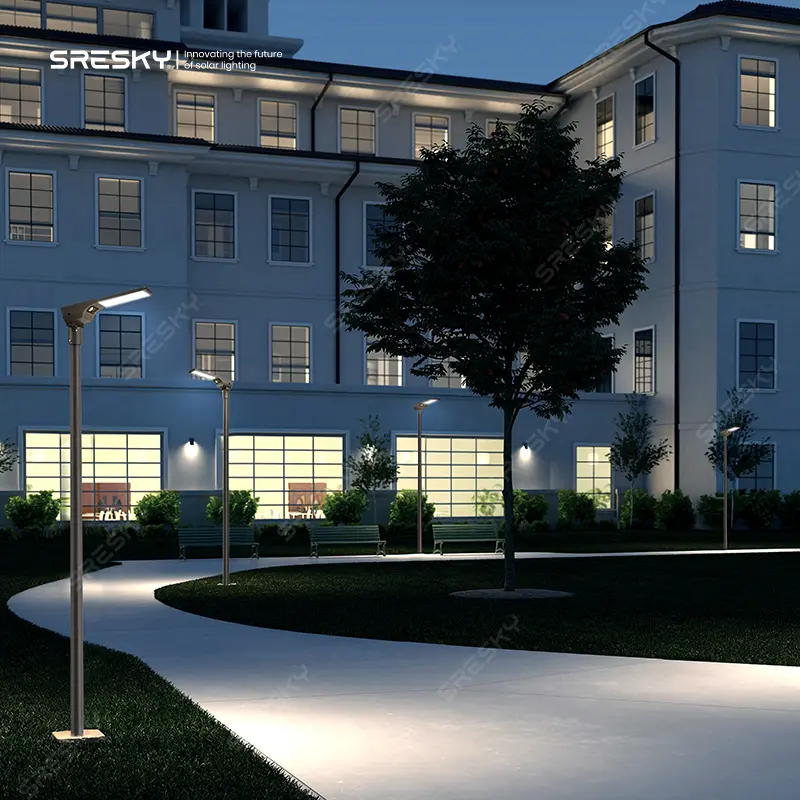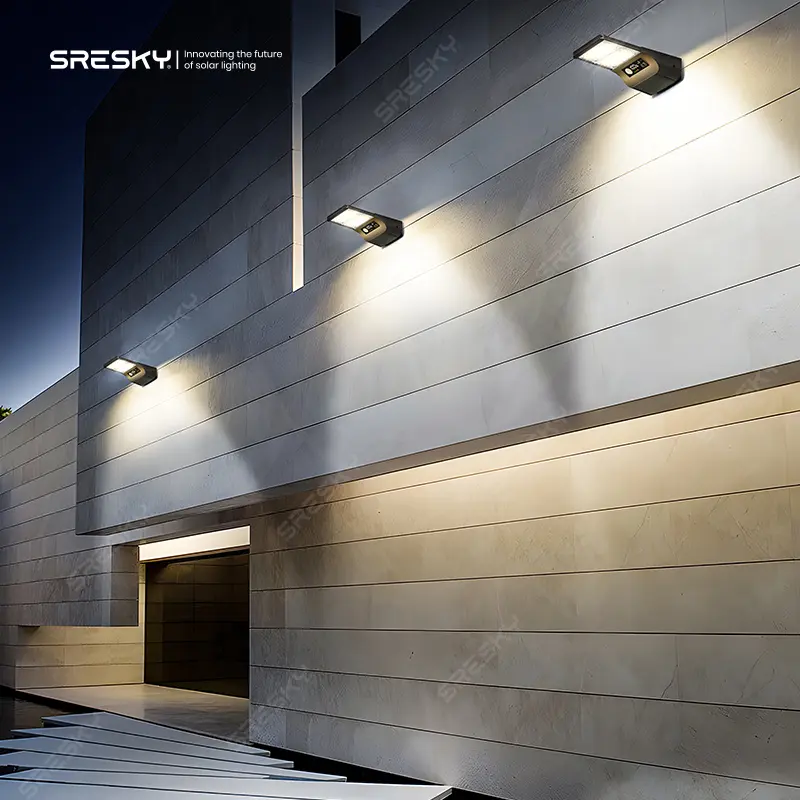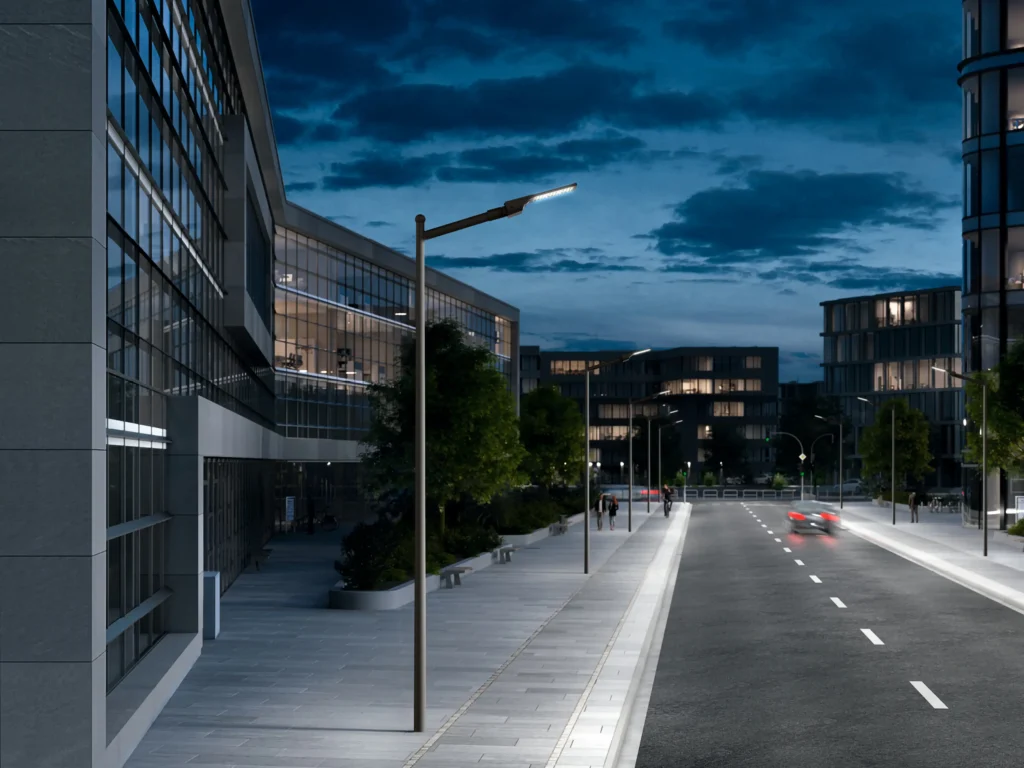With the acceleration of urbanization, commercial areas, as an integral part of city life, have increasingly focused on their lighting design. A high-quality lighting solution for commercial areas not only meets basic lighting needs but also enhances the overall atmosphere and brand image, attracting more consumers. This article will provide a detailed interpretation of commercial lighting solutions, covering lighting design principles, key points, case studies, and energy-saving and environmentally friendly measures.

First, Lighting Design Principles
Commercial lighting design should adhere to the following principles to ensure a seamless integration of functionality, aesthetics, and energy efficiency:
- Functional Lighting: Commercial area lighting should first ensure that the lighting needs of each area are met, such as entrances, passages, display areas, and so on. Bright, even lighting not only allows consumers and employees to move safely at night but also enhances the overall image of the commercial area.
- Decorative Lighting: Enhance the unique atmosphere and brand image of the commercial area through skillful lighting design. Utilize the layered sense of light and color changes to create a shopping environment that aligns with the brand image and captures consumers’ attention.
- Energy Saving and Environmental Protection: While pursuing beauty and comfort, commercial lighting design should also prioritize energy efficiency and environmental sustainability. Employ efficient, energy-saving lighting equipment to reduce energy consumption and lessen the environmental impact.
Second, Key Points of Lighting Design
- Light Source Selection: Prioritize the use of LED and other efficient, energy-saving light sources. LED light sources, with their high luminous efficiency, long life, and good color reproduction, are highly suitable for commercial area lighting.Adjust the color temperature, brightness, and color rendering according to different areas and uses. For instance, the entrance area can use a high-brightness, high-color rendering light source to create a bright, spacious entrance space; the display area can select an appropriate color temperature based on the characteristics of the goods to highlight their details and features.
- Lamp Selection and Arrangement: Lamp design should harmonize with the commercial area’s decorative style, reflecting brand characteristics. Choosing lamps that match the commercial area’s style enhances its overall aesthetics.Lamp arrangement should consider the spatial layout and pedestrian flow, ensuring uniform lighting without blind spots. Tailor the lighting density and layout to the different areas and uses of the commercial area.Focus on key lighting in important areas such as entrances, windows, and display areas to highlight products and brand images, drawing consumers’ attention.
- Lighting Brightness and Uniformity: Set reasonable lighting brightness levels for different areas and uses within commercial areas. For example, higher brightness levels at entrances and passages ensure the safety of consumers and employees, while moderate brightness in display areas prevents excessive brightness or darkness that could affect product display.Ensure lighting is uniform to avoid overly bright or dark spots. Through thoughtful lamp arrangement and lighting design, achieve optimal lighting uniformity, providing consumers with a comfortable shopping environment.
- Color Matching: Consider the brand image and product characteristics of the commercial area when selecting color schemes. Choose appropriate color matching to coordinate with the overall style and enhance the brand image.Pay attention to the coordination of color matching to avoid abruptness. Reasonable color matching creates a shopping environment that complements the brand image and improves the consumer shopping experience.
- Intelligent Lighting System: Implement an intelligent lighting system for remote monitoring and control of lighting equipment. This system can monitor the operation status and energy consumption in real time, improving management efficiency.The intelligent lighting system can automatically adjust lighting brightness and switching times based on the commercial area’s operating hours and pedestrian flow, achieving energy savings while providing a more comfortable and convenient shopping experience.The intelligent lighting system can also integrate with other commercial area systems (e.g., security, fire systems) to enhance overall safety and operational convenience.

Third, Lighting Design Case Study
Outdoor Lighting in Commercial Districts: Application of Alpha Series Solar Street Lights
In outdoor lighting design for commercial districts, consider innovative solar lighting technology to achieve environmental and energy-saving goals. The Alpha series solar street light offers an ideal solution for outdoor commercial lighting with its high efficiency, intelligence, and multifunctionality.
Product Highlights Integration:
- High-efficiency LED light source: The Alpha series street light uses high-brightness LEDs (e.g., the SSL-53 model provides 3000 lumens), ensuring sufficient and even illumination while the high lumen maintenance ratio of 230 lm/W ensures energy efficiency.
- Intelligent Control: Features a multi-mode remote control function, allowing managers to adjust lighting modes, color temperature, and brightness according to the commercial area’s needs.
- Environmental Adaptability: Designed for various climates, the street light operates stably in temperatures ranging from -10°C to +55°C, suitable for most commercial districts worldwide.
- Dual Color Temperature Technology: The color temperature automatically switches from warm white at 3000K to cool white at 5700K via a rain sensor, adapting to weather conditions and improving nighttime visibility and safety.
- Expandability and Flexibility: Supports the expansion of solar panels, backup batteries, and external adapters, offering customized lighting solutions for specific commercial area needs.
- Installation Diversity: Supports various installation methods, including horizontal, vertical, and wall mounting, to fit different architectural styles and layouts.

Practical Application of Commercial District Lighting Design:
- Install Alpha series solar street lights at entrances or main passageways to create a bright, guiding lighting environment with their high brightness and intelligent control.
- In parking lots or walking areas, use the street light’s automatic sensing function (e.g., PIR sensor) for energy-efficient lighting that adjusts to presence and ensures nighttime safety.
- Adjust street light color temperature and brightness to match the commercial area’s brand image, enhancing the shopping experience.

Fourth, Energy Saving and Environmental Protection Measures
- Use of Energy-Saving Lamps and Lanterns: Choose high-efficiency, energy-saving LED lamps and lanterns for commercial area lighting, reducing energy consumption with their long life and environmental benefits.
- Optimize Lighting Design: Reduce energy consumption and light pollution through thoughtful design and selection. Use appropriate layouts and densities to avoid excessive lighting and choose suitable color temperatures, brightness, and rendering for different areas.
- Intelligent Lighting System: Use an intelligent system for smart control and management, adjusting lighting based on operational times and pedestrian flow for precise lighting and reduced energy waste. Integration with other systems can optimize energy sharing and efficiency.
- Regular Maintenance and Management: Maintain lighting equipment regularly to extend service life, reduce costs, and ensure safety and reliability. Replace damaged lamps, clean fixtures, and inspect electrical systems for optimal performance and energy efficiency.
Commercial area lighting design is crucial for brand image and consumer experience, enhancing the atmosphere and attracting consumers to increase business value. Adhering to principles of functionality, aesthetics, and energy efficiency, focus on light source selection, lamp arrangement, brightness uniformity, and color coordination. Incorporating intelligent systems and energy-saving measures facilitates smart management, reduces energy use, and creates an attractive, functional lighting environment.
The integration of Alpha series solar street lights demonstrates a commitment to sustainability while improving the commercial environment’s functionality and appeal. Looking forward, we aim to continue integrating innovative technologies to provide efficient, intelligent, and eco-friendly lighting solutions for commercial districts, fostering a brighter, safer, and more comfortable shopping environment.